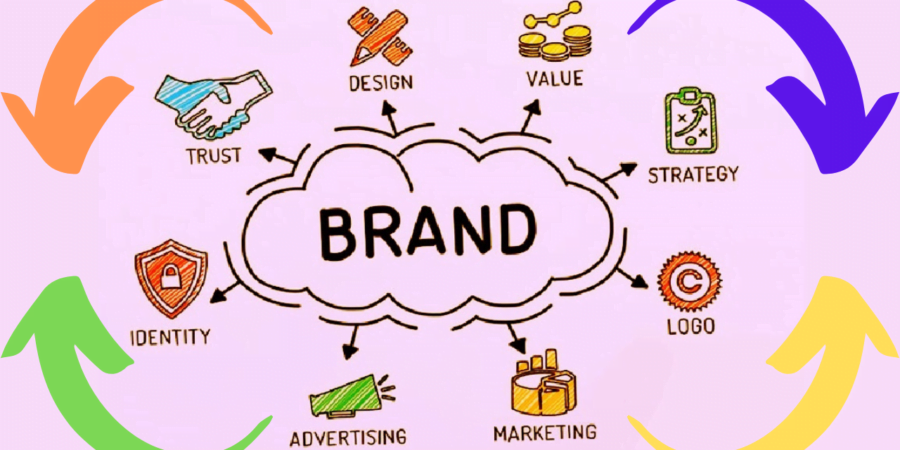Creating a strong brand is the first step to the success of any venture. It’s the best way to build an emotional connection with customers that translates into long-term loyalty.
Just a simple look at the products available in your surroundings, from clothes to cars, will confirm this to you, as most of the dominant companies in the market have maintained their brand for decades despite the change of owners and shareholders.
If you’re thinking of developing a brand from scratch and making it resonate with customers, it’s important to fully know and understand the elements of a brand.
Building a Brand from Scratch: Pro Tips for Success.
Our team of branding experts has put together a comprehensive guide on the key steps to creating a successful brand from scratch. From crafting a strong visual identity to defining your marketing strategy, this guide will give you the tools you need to build a brand that stands out and drives sales.
Whether you’re a startup or an established company looking to rebrand, this guide will show you how to do it on a budget. With the right approach, creating a brand that resonates with customers and drives your business forward doesn’t have to cost a fortune:
1. Target the right audience
Creating a brand that resonates with customers starts with understanding your target audience. As any savvy entrepreneur knows, trying to appeal to everyone is a recipe for disaster.
Instead, you need to focus on a specific group of people with common characteristics, such as marital status, income level, and lifestyle. A successful brand is one that stands out from the competition and gives customers a sense of belonging.
A good example of this is Rolex, the luxury watch brand. Since its founding in 1905, Rolex has always targeted the wealthy class, and has managed to maintain its exclusivity and prestige. It is not only about the quality of the product but also the feeling of luxury and prestige that comes with owning a Rolex watch. This is what sets it apart and drives sales.
2. Market study
When starting a new brand, the first hurdle you will face is coming up with a winning idea and attracting customers. Here comes the role of market study.
Before taking any steps towards launching your brand, it is crucial that you dive deep into your market to understand your target audience and what they are looking for. This means collecting data about your audience, and analyzing your competitors’ strengths and weaknesses.
With this information, you’ll be able to craft a marketing message that resonates with your audience and gives you an edge over the competition. By investing in market research, you will gain the knowledge you need to create a brand that stands out and delivers the solutions your customers crave.
When it comes to market research, there are some key steps you can take to gain a deep understanding of your target audience and the competition. These include:
- Scouring websites and social media pages that cater to your target audience to see what they are talking about.
- Use search engines to find the best performing brands in your field, and study their marketing strategies.
- Conduct surveys to gather information about the types of products and services your target audience is looking for.
- Consult with specialized market research firms if you are working on a larger project and need additional support.
3. Building a unique brand identity
Building a unique identity is key. It’s not just about having a fancy logo or high-quality products; It is about effectively communicating your brand story to your audience.
To do this, you need to make sure your brand stands out from the competition and has a distinct personality. This will help customers connect with your brand and develop a sense of loyalty over time.
Having a strong brand identity is one of the most important factors in building long-term customer loyalty. When customers believe a brand is reliable and trustworthy, they are more likely to ignore any shortcomings in products or services and accept a higher price.
4. Connect your brand to a story
When it comes to creating a brand, telling a story is crucial. Not only does it help build trust and credibility with customers, but it also helps solidify your brand identity. After all, a good story can spread like wildfire, and is often stronger than the quality of your products.
When crafting your brand story, it’s important to keep it simple and personal. Ideally, it should answer key questions about the brand’s assets, such as:
- Why did you start this brand?
- What prompted you to develop it?
- How does your brand positively impact society?
- Do you prioritize customers’ needs and wants?
Having a story to tell can give you a huge advantage over the competition. People tend to be more attracted to brands that have an interesting backstory or compelling narrative. By sharing your brand story through promotional videos and ad campaigns, you can create an emotional connection with customers that competitors will find difficult to match.
Successful companies know the power of storytelling, and will often highlight the founder’s journey or the success story of the first branch of the company. This can help set them apart from the pack and make their brand more relatable. Instead of just focusing on advertising, using your story as a promotional vehicle can be a powerful tool in capturing the hearts and minds of customers.
5. Professional logo design
When creating a brand, the logo is the face of the company and will be displayed in all marketing campaigns and official interfaces. That’s why it’s important to invest in a professional logo design that’s simple, memorable, and consistent in its use of color.
Market leaders understand the importance of simplicity and clarity in their designs. It makes it easier for customers to recognize and remember the company. Color consistency is also important because it should align with the company’s goals, target audience, and the psychological significance of each color. It is important to take the time to research or hire an independent design professional to get the job done right.
Building a strong brand identity is not only about logo design, but also requires investing in e-marketing to reach the widest possible audience in a short period of time.
6. Legal registration
Great ideas are nothing without proper protection. Not taking the initiative to register your business or create legal entities to represent them makes them vulnerable to being ripped off by competitors and opportunists.
To protect your ideas, you should choose a unique business name and slogan that you will use in the long term. The best way to ensure that your name and logo is truly unique is to check with the appropriate governing bodies. Registering a trademark with legal authorities will help you protect your intellectual property rights and prevent misuse or theft. I explained in the trademark protection article the details of the method.
If you plan to use your trademark in e-commerce or online services, it is wise to set up and register a US online company. This will give your brand credibility, allow you to receive payments without any restrictions, and make it easier to open a US bank account.
conclusion
A strong brand is key to maintaining customer loyalty and investor confidence, giving you an edge over the competition at a lower cost. Keep in mind that you are not the only player in the game, so it is important to always be aware of what your competitors are offering and strive to offer better quality at a lower price.
Remember, the only thing that can keep you afloat during a crisis is the trust of your customers, so building a reliable and reputable brand is essential. Now it’s your turn to share your thoughts on this topic, and I’m happy to answer any questions you may have in the comments section.






Leave feedback about this